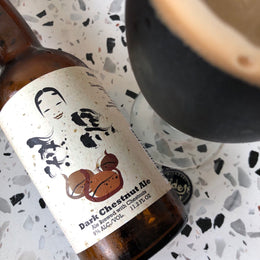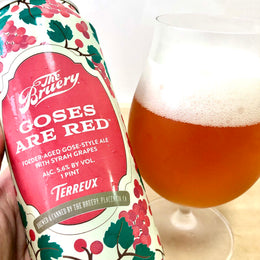Kirin’s 3 Flagship Beers: Kirin Lager, Kirin Ichiban Shibori ‘First Press’, Kuronama Black

The roots of Japanese brewing can be traced back to one Western immigrant. It was 1869 when a Norwegian-American brewer by the name of William Copeland set up Spring Valley Brewery in Yokohama, introducing the locals to lagers and Bavarian-style beers.
Official accounts didn’t mention why the Norwegian-American decided to move to Japan. We can make an educated guess that this was because Japan showed great economic promise with its Meiji Restoration that began in 1868. Many Western entrepreneurs saw business opportunity and flocked to this faraway land to seek their fortunes.
Copeland built a fully-functioning brewery even when Japan had no facilities and equipment for beer brewing at the time. He built his own malt mill powered by an improvised waterwheel installed at the natural spring next to the nearby Amanuma Pond. And because there were no freezers to cool the wort (a malt mixture used to make beer), he brewed most of his beer during the cold season from October to March. To store his barrel-aged beers at a low temperature, he also dug a 210-meter cave into the side of a hill where the temperature is cool and consistent. He was also first in Japan to adopt many modern commercial beer practices, such as beer pasteurisation just when the process was developed in Paris. His beers were sold wooden casks to many beer taverns in Yokohama popular with foreigners, and even to buyers in Tokyo and Nagasaki.
While Copeland was a talented brewer, he was said to ultimately be a poor businessman. The business folded in 1884, and many Japanese brewers who trained under Copeland left the brewery and helped set up other beer breweries across Japan. Spring Valley Brewery was put up for public auction and sold to Japanese investors in 1885, who would rename the brewery Kirin Brewery.


While William Copeland would not return to beer brewing, his legacy as the first pioneer of Japanese beer pioneer continues to be honoured. His final resting place is the Foreigner’s Cemetery in Yokohama, and his grave continues to be maintained by Kirin Brewing Company. His legacy also lives on in Spring Valley Brewery that was revived in recent years by Kirin as a craft beer brand.
 Founded in 1869 as Spring Valley Brewery by William Copeland, Japan's first brewery was later renamed "Kirin".
Founded in 1869 as Spring Valley Brewery by William Copeland, Japan's first brewery was later renamed "Kirin".
Kirin is today known as a heritage beer brand, one which represents the beginning of beer brewing in Japan. Its Yokohama brewery, which was originally started by Copeland, is the oldest functioning brewery in the country. Even its name and emblem, inspired by a mythical Chinese unicorn, evokes Japan’s era prior to the Meiji Restoration’s “Westernization” of Japan – a time when the Lunar New Year was still celebrated and traditional Asian motifs were prevalent. (Interestingly, Japan is the only East Asian country that doesn’t observe the Lunar New Year, a sign at how much Japanese society had changed through those years.)

Throughout the 60s and up till the mid-80s, Kirin Lager really dominated the beer scene, having over 60% of the Japanese beer market share. this was several times larger than its competitors that languished in the 10% to 20% range. It was only dethroned when the Asahi Super Dry came along in 1987 and swept up the mainstream beer drinkers in Japan, many of whom preferred a dyer, more refreshing beer.
In response, Kirin began marketing itself more earnestly in the 1990s, spending enough money to make Harrison Ford appear in a series of whacky ads where he is found repeating “Kirin Lager kudasai” (please give me Kirin Lager). More importantly, Kirin also stepped into premiumisation, developing a new 100% malt beer called the Kirin Ichiban Shibori, which means “First Press”.
“First Press” refers to Kirin’s brewing process which only uses the very first batch of wort (the sweet syrupy malt extract made during the brewing of beer, prior to alcohol fermentation). This process is said to remove the bitter-tasting tannins from beers, and help create a purer taste.

Compared to other major brewers of today, Kirin focuses on richer, usually 100% malt traditional brews made closer to the European tradition, but with adjustments to appeal to the Japanese palate.
We’ll be doing a side-by-side tasting of 3 of Kirin’s most popular core edition beers – the Kirin Lager, Kirin Ichiban Shibori “First Press”, and Kirin Ichiban Kuronama Black.
Let’s give this a go.
Kirin Lager, 5% ABV – Review

Colour: A yellow-gold hue.
Nose: There's a bright, crisp initial scent that leans toward the sweeter side. I pick up hints of honey, which sit alongside a distinct artificial corn aroma that's reminiscent of what I get with Heineken brewed in Asian markets. There's also a faint trace of grapefruits and a light, refreshing quality that's somewhat akin to sake. Classic lager characteristics are definitely more present than other Japanese brews.
Palate: This brings a crisp, drying citric sensation – hallmark of many Japanese rice lagers - accompanied by dominant flavours of barley tea. This is counterbalanced by a fresh grapefruit undertone that offers both sweetness and a touch of bitterness. The mouthfeel is on the lighter side.
Finish: The finish concludes with a short clean note. It's swift, it's to-the-point, and it leaves behind a distinct barley tea impression paired with a delicate hint of grassy hops.

My Thoughts:
🌤 A little more robust than light Japanese lagers, which makes it stand out for its balance – like a sunny day with light cloud cover.
This is light and crisp, and bears the hallmarks of many Japanese brews, but stands out for its more pronounced barley undertones and a trace of hop bitterness. I also particularly enjoyed the slight fruitiness it brings that isn’t present in core editions of other Japanese beer brands like Asahi Super Dry and even the Sapporo. As with most Japanese rice lagers, it has a crisp opening, clean finish and low hop presence, which makes it a great choice to pair with many Asian dishes.
Kirin Ichiban Shibori, First Press, 100% Malt, 5% ABV – Review

Colour: Gold with dense foam on top.
Nose: Very mellow and gently sweet. The aroma carries mild hints of honey with a soft touch of lemon rind, followed by a background of subtle hoppiness.
Palate: I immediately noticed its remarkably creamy and velvety texture, standing out distinctly from the Kirin Lager. It brings forward a rich, pronounced profile of toasted granola and barley, which feels quite hearty. Complementing these are sweet notes of honey, which then transitions into a sharp brightness of grapefruit. It's a heavier palate, but it manages to maintain good balance.
Finish: Long and lingering, characterized by a drawn-out hoppiness that doesn't rush to leave the palate. As this hop note starts to mellow, there's a residual sweetness from the honey and the malt that gently trails off.

My Thoughts:
👑 Of all the commercial Japanese beers I’ve tasted, this takes the crown for weight and balance. So satisfying!
Out of all the beers I've so far, this one feels like it strikes the right chord in terms of heavier weight and balance. It's rich without being overpowering and brings a consistency in its flavour profile from the start to its prolonged finish. This is like a significantly upgraded, richer and bolder take on the classic Kirin Lager. This is also the beer that I would happily introduce to a long-time beer-drinker who has had their fair share of commercial brews and is seeking something a bit more satisfying.
Kirin Ichiban Kuronama Black, 100% Malt, 5% ABV – Review

Colour: Stout black.
Nose: Bold espresso punches through, accompanied by a light buttery undertone. There's a mild corn aroma, but what really stands out is a pronounced marmite-like yeasty scent, with a trailing whisper of vanilla.
Palate: This one's bold in flavour and very satisfying. First impression is of "kopi siew dai" (that's milk coffee with a tad less sugar for those who might not know) accompanied by citrus and light citrus rinds that mingle well with the growing, dominant coffee. Over time, flavours evolve, bringing forth a light nutty profile coupled with toasted granola.
Finish: It's surprisingly clean and light. Imagine the taste of a delicate brown sugar steamed cake from Cantonese restaurants in Hong Kong ("ma lai ko") mixed with the richness of a coffee pound cake. And if you've ever had a Kopiko candy, that's the final note you're left with.

My Thoughts:
💌 A love letter to coffee lovers. Rich, deep and confectionary-like. Just lovely!
First off, has a lovely depth of flavour. Some Asia-made stouts I've tasted, especially the canned ones (yes, Guinness Foreign Extra Stout, I'm Bombastic Side-Eyeing you), throw bitterness at you without any substantial richness to back it up. Not this one, though. There's a beautiful harmony of sweetness and full-bodied richness here that makes you want to take another sip, and then another, and then another.
What's even better is its accessibility; you don't need to be a stout aficionado to appreciate this. Its milk coffee character is undeniable, echoing the bitterness of roasted coffee beans and sweet treats like Kopiko, but it barely has a hoppy bitterness which I know most Asian drinkers aren’t into. It's almost like a love letter to coffee lovers and anyone who has a thing for coffee-flavoured goodies.

@CharsiuCharlie







